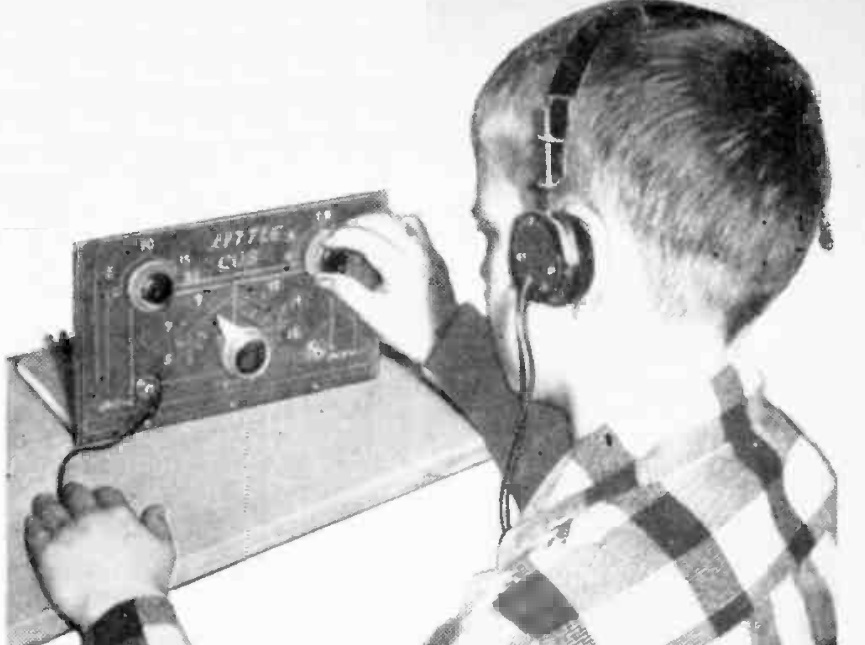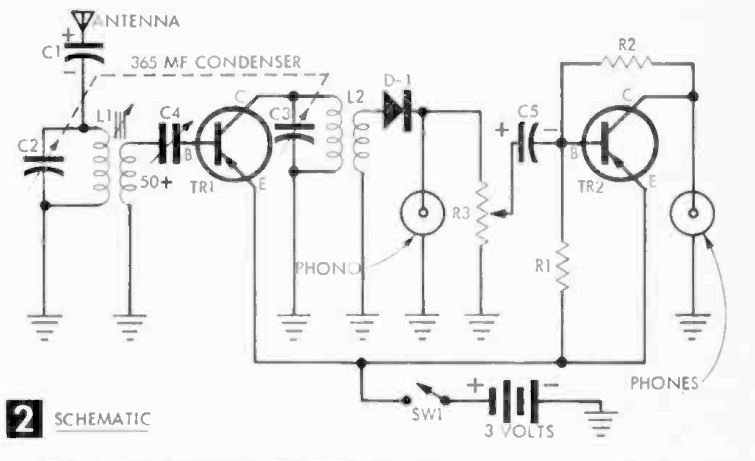 The young man shown here has been drawing Social Security for a few years now, but in 1960, he was pulling in a broadcast station thanks to the two transistor receiver described in the Spring 1961 issue of Radio TV Experimenter.
The young man shown here has been drawing Social Security for a few years now, but in 1960, he was pulling in a broadcast station thanks to the two transistor receiver described in the Spring 1961 issue of Radio TV Experimenter.
The set was dubbed by the magazine as the “Little Cub,” and was described as an ideal project for boys, individually or in groups. The circuitry was mounted on the front panel, which was a printed circuit board. Half the fun of building the set was etching the circuit board using etchant liquid. According to the magazine, contact with clothing would cause it to be soiled with a brownish color, “but this solution is not dangerous in any form.”
The circuit board traces actually went on the front of the board, and additional decorations and dial markings were added, meaning that the lettering was all in copper.
After the circuit board was etched and rinsed, the glass baking pan in which it did its work was washed with soap and water and put away, and Mom was presumably none the wiser. Then, the two transistors and one diode and other components were soldered in place. The first stage, a 2N414A transistor, served as RF amplifier and used feedback to boost the signal. A 2N107 transistor was used as audio amplifier. The set also featured a phono input which could be hooked to a record player.

